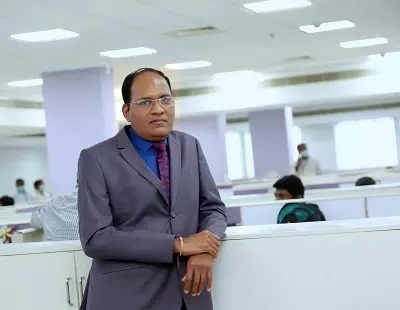Indian Bank and Allahabad Bank, both with Rs. 4,00,000 Crores plus of business each, were merged together to form a single entity in early 2020.
Integration of IT operations of the two banks meant bringing together over 400 applications, IT Infrastructure spread across over 6000 locations in the country, 6 Data Center Locations, and over 12000 network links.
The integration was therefore not just challenging but given the nature of business was also required to be quick and completely error free.

Not many companies deal with 10s of millions of customers on a daily basis. But in this case, the customer base was approximately 11 Crores, using banking products across the range of products in one of the banks.
“Given both banks were similar in size, during the merger, the management got an opportunity to follow the approach inline to the strategy of amalgamation taken up by organization viz. “best of the two will prevail”. The same was followed and all applications were studied in depth and the application found to be in-line with requirements of amalgamated entity were selected. This has helped the bank to replace/upgrade systems to meet the vision of the amalgamated entity,” he added.
Sarda shares some of the other unique challenges faced by the bank during the process:
- Same Core Banking Solution viz. from M/s TCS yet architecture dis-similarities, due to which the GUI and functionality were totally different and application was as good as different application.
- Compliance to Licensing Policies of Software OEMs such as Oracle, Microfocus, etc., as different licensing models were followed by both the banks.
- Reutilizing various IT equipment of both the Banks for amalgamated entity was a complex task in itself. The deployment architecture was designed in such a way that HW and SW of multiple OEMs can coexist.
Being a proactive bank
Banking industry has seen many changes in the last few years and these changes have pushed the banks’ IT teams to implement new technologies, in some situations change the application architecture and also, modify organization policies.
For banks, it has become imperative to constantly evaluate the change in the industry and prepare for the change by being proactive rather than being reactive.
To achieve the same, Indian Bank has created a department (reports directly to the top management) which takes care of re-engineering of Business processes and observes the trends in the banking industry. The same department suggests new products, organization strategies, ways to improve the customer experience, etc.
This helps in faster decision making by the management and ensures that the short term/medium term strategy and long-term goals formed for the organization ensures competitiveness across the industry.
The bank’s IT department has been segregated into two parts: Operations and Innovations. The operations team handles the regular IT operations and business continuity. On the other hand, the Innovations team brings new technologies to the bank, streamlines IT processes and introduces best practices prevailing in the industry.
According to Sarda, the banking organisation is constantly upgrading its IT infrastructure to ensure that all digital channels are always available to the customers without any downtime or lag.
Making changes in the BCP
For Sarda, the last one year has been a great learning lesson. “Previously, BCP was to handle disasters or accidents, but last one year has taught that the BCP should also be ready to handle such situations in which the operations have to be made de-centralized in no time for ensuring safety of the employee and continuity in the operations.”
He also believes that the importance of automation has become clearer and there is a shift in the nature of automation, which was earlier on non-critical jobs and now has moved for handling critical jobs such as End of Day operations, which are crucial for the bank to function.
“With revised BCP, efficient use of collaborative tools, power to de-centralize our core IT operations, managing critical applications using remote tools and a vision to automate all critical jobs, we are prepared to handle all such uncertainties in the future,” Sarda maintained.
Going ahead, the Chennai headquartered company has an extensive plan for revamping not only technology but also the operating model followed in business operations.
According to Sarda, in the 5 year Roadmap, implementation of the API Banking, AI based banking bots, automation of processes, partnering with neobanks are in the pipeline which will help in enhancing productivity of the bank on multiple parameters.



